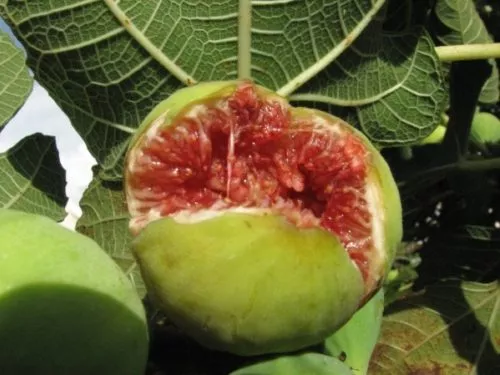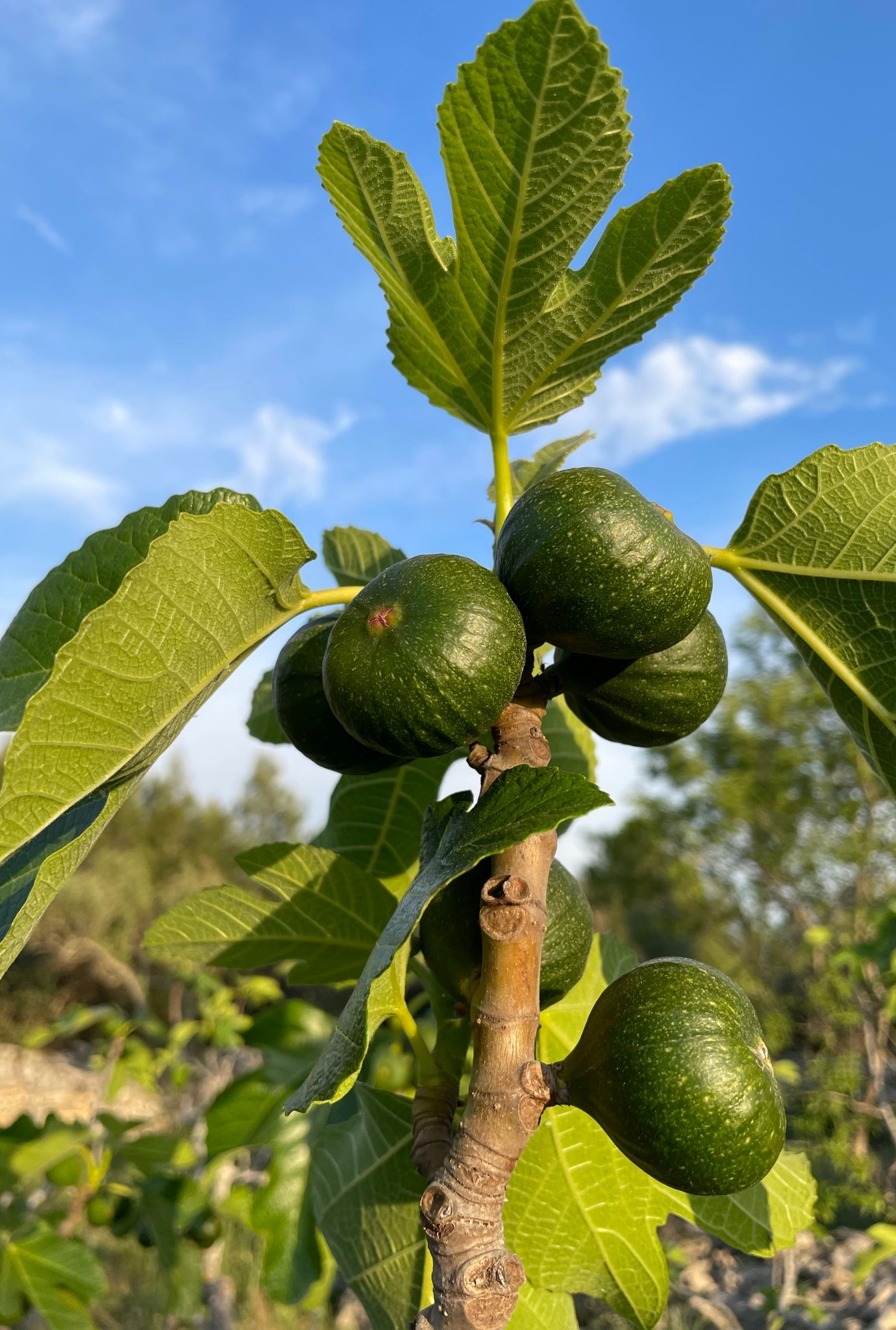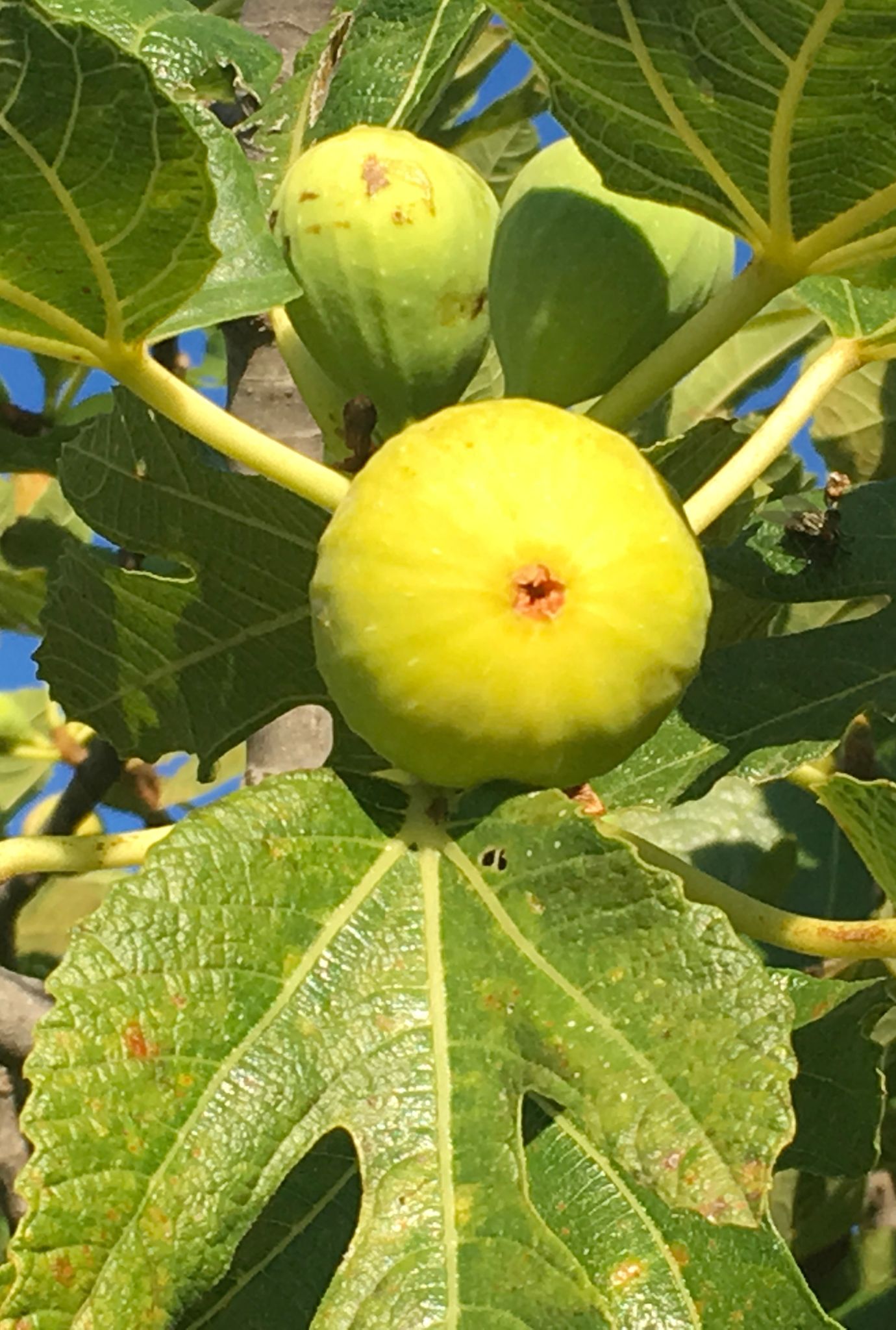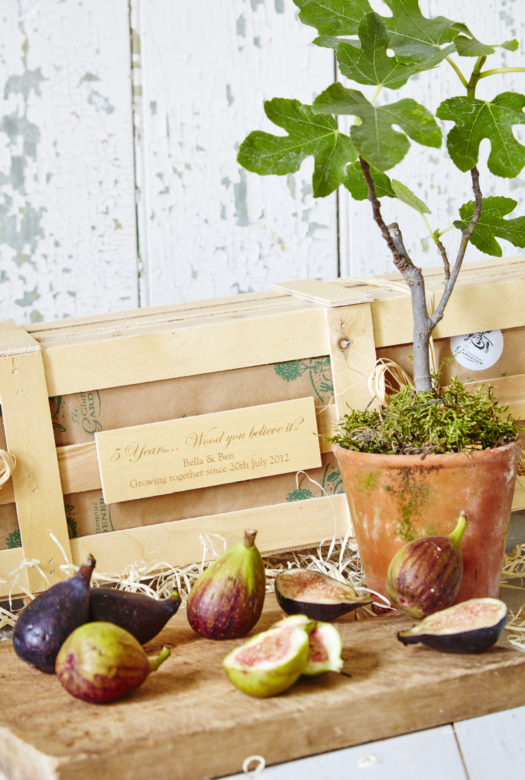Fig Tree
A Comprehensive Gluttonous Gardener Plant Care Guide
Who wouldn’t delight in plucking ripe figs from their very own tree and devouring the succulent flesh whilst it’s still warm from the summer sun?
Despite their exotic origins, fig trees grow and thrive happily in the UK. Over the years we’ve delivered thousand of beautiful fig trees throughout the British Isles, and are always thrilled to receive pictures from happy customers.
Biblical references to the fig establish it as one of the plants in the Garden of Eden and indeed, the earliest form of clothing. In Polynesian myth, the first fig tree grew on the moon and the fruit fell to Earth when Hina the moon goddess accidentally dropped a branch of the delicious fruit. In Ancient Greece, those who informed on illegal fig exporters for reward were known as ‘sykophantes’ – from sykon (fig) and phainein (to show) which explains the origins of our word to describe obsequious deeds.
In a nutshell
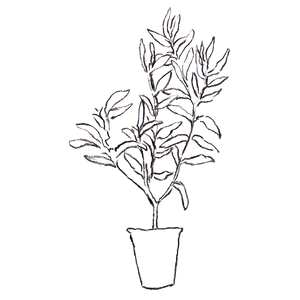
Happy growing in a pot

Tree

Fruit

Half-hardy
Care Instructions

Planting
A fig tree can be planted at any time of year as long as the ground isn’t frozen. The tree will thrive in any soil with good drainage, but it will be happiest in free-draining and moisture-retentive soil in the sunniest position possible. A warm and bright location is vital because the fruit needs warm sun to ripen.
Tradition has it that a fig tree should be planted in a Gladstone bag. The theory behind this bizarre idea is actually very sound, as fig trees will produce more fruit if they have a restricted root run, but your fig will also flourish in a container or in the garden.
Dig a hole twice the size of the root-ball, spreading the roots as you refill the hole to the base of the stem. Press the soil down with the heel of a boot. For the first few seasons it’s wise to provide a sturdy stake to support the establishing trunk and encourage strong root growth.

Watering
Water deeply and regularly throughout the summer whilst the figs swell and ripen, but do not water erratically as this may cause the fruit to split. Container grown plants will require more careful watering and can rapidly parch in hot weather, especially in terracotta pots. They may also more easily become waterlogged, so the pots should be positioned on pot feet to allow water to drain away. All figs should be watered more sparingly throughout winter.

Feeding
In early spring the tree will appreciate a feed with a balanced general-purpose fertiliser followed by a mulch of well-rotted manure or compost. Once the fruits appear in early summer, encourage them to flourish with an application of liquid tomato fertiliser each fortnight until they start to ripen. Container grown figs should be repotted every three years when dormant in winter. Choose a pot which is about 5cm larger each time.

Pruning and training
The branches of the fig tree can be trained into an attractive fan shape against a sunny wall to ensure your fruit receives lots of sunshine in order to ripen fully. Figs in more exposed positions will benefit from a stout support system to prevent branches snapping in gales when wind catches their large leaves. In the first few months of each year when the tree is dormant, prune back any awkwardly placed or long and leggy branches to 5cm stubs to create a more productive and attractive shape. Remove any suckers appearing from the ground. In late August remove any figs larger than pea-sized that haven’t ripened properly, and the tiny embryo fruits that remain will develop into your main crop next year.

Winter
Despite their Mediterranean origins, fig trees are surprisingly hardy, but for young trees and during particularly freezing weather it’s sensible to provide a little protection to prevent frost damage. The bare branches can be wrapped in horticultural fleece or packed with dry straw. Remove protection by the end of April. During their dormant months, potted figs may be wrapped in fleece in a sheltered spot or overwintered somewhere cool and sheltered such as a porch, shed or unheated greenhouse. Keep the compost slightly moist throughout the winter months, and return the plant to its sunny garden position when all danger of frost has passed.

Fruiting
When you start to notice little cracks appearing on the skin of your fruit you know it is fully ripe, but be quick, because peckish birds will be only too happy to help themselves. It might be wise to cover your tree with netting to prevent theft. A bumper crop of figs can be easily dried so that even in the darkest winter months you can still enjoy a little taste of summer. Simply cut the fruit in half and lay skin side down onto a baking sheet, then gently dry for 12 hours with the oven door slightly open, and on the lowest setting possible. In the happy event that we have a particularly dry, warm summer they can be dried outside. Why not try our recipe for Fig, mint and goats cheese salad or our Preserved figs so you can enjoy them all year round.
